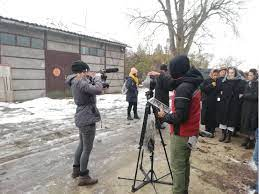Is eastern Africa’s drought the worst in recent history? And are worse yet to come?
Large locations of Ethiopia, Somalia and Kenya are presently in the hold of a serious dry spell. An approximated 16.7 million individuals face severe food instability. That is greater than the combined populaces of Austria and Switzerland.
4 successive wet periods have currently failed since late 2020, a weather occasion not seen in at the very least 40 years. This meteorological dry spell has led to a loss of dirt moisture, triggered rivers to dry up, and led to the fatality of countless animals.
The Horn of Africa experiences 2 wet periods annually. The timing differs throughout the area, but rainfalls extensively fall from March to May (the "lengthy rainfalls") and from September to December. The postponed begin and after that failing of the March to May rainfalls this year is really felt especially in equatorial components of the area, where the lengthy rainfalls add 70% of the yearly total.
The circumstance is not likely to improve in the short-term. Forecasts recommend that the September to December wet period could also fail. This would certainly set the phase for an unmatched five-season dry spell.
The ongoing altruistic dilemma triggered by the dry spell increases major questions about future food and sprinkle security in the Horn of Africa. The newest Intergovernmental Panel on Environment Change record jobs that global warming will adversely affect food systems in the area by shortening expanding periods and enhancing sprinkle stress.
The dilemma also increases the questions: is the present dry spell the most awful in current background and might future droughts be also even worse?
I'm a physical geographer that uses summaries of weather within historic documents, combined with meteorological information, to explore how rains has varied in the previous throughout various areas of Africa - a self-control known as historic climatology. To understand the family member seriousness of the present dry spell, we need to examine both historic documents and information.
For the purposes of this article, I am concentrating on the last 200 years. This time-span consists of what is called the duration of instrumental record - the duration throughout which we have used standardised tools (called rainfall evaluates) to measure rains. The earliest methodical rains information collection in Africa started in the 1830s for seaside Algeria and southwest Southern Africa. In eastern Africa, however, continuous runs of information are just available from the 1870s onwards.



